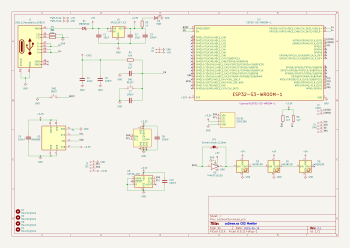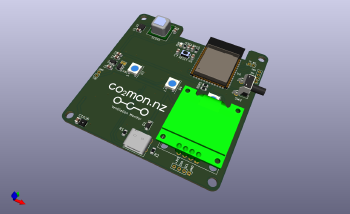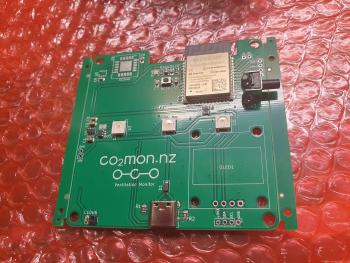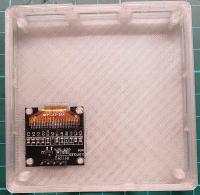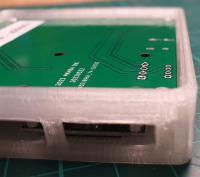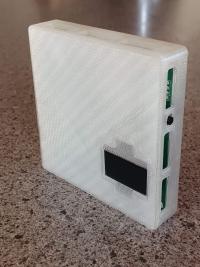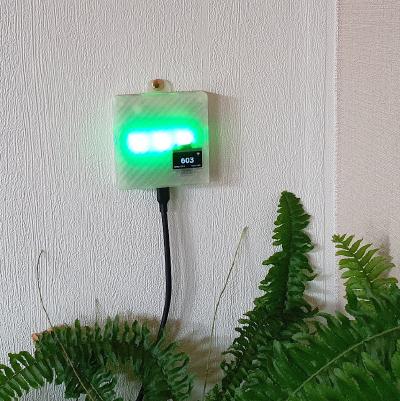Matt Brown: 2023 Mid Year Review
 I m six months into my journey of building a business which means its time to reflect and review the goals I set for the year.
I m six months into my journey of building a business which means its time to reflect and review the goals I set for the year.
No further investment in co2mon.nz
In March I made the decision to focus on completing the market research for co2mon.nz. The results of that research led to two key conclusions:
- Indoor air quality/ventilation is not a problem many people are actively thinking about or looking to spend money to improve.
- Even when introduced to the problem and educated about the need, most people are looking for a one-off expense or solution (e.g. the physical monitor) and are much less interested in a monitoring software service.
Based on that, it was clear that this is not an opportunity that I should continue pursuing and I ve put co2mon.nz into maintenance mode.
I ve committed to maintaining the infrastructure to support existing customers, but I won t be investing time or energy in developing it further.
Discipline in selecting product opportunities
The decision to stop investing more time into co2mon.nz was straightforward given the results of the research, but it was also painful given the time I ve already sunk into it.
I hindsight it s clear that my enthusiasm to solve a problem with technology I enjoyed was my driving force rather than a deep understanding of the wants and needs of potential customers. I don t entirely regret trying my luck once - but it s not time efficient and I know that following that pattern again is not a sustainable or viable path to building a successful business.
I ve decided to use the following list of questions to bring more discipline to how I evaluate product opportunities in future:
- Problem: Is this something that a sizeable number of people are struggling with AND are willing to spend money solving?
- I find the framework from Excuse me, is there a problem? really useful in thinking about this question.
- Capability: Can I deliver a solution that solves the problem in a reliable and cost-effective way?
- Excitement: Am I excited and motivated to invest time in building the solution to this problem?
- Trust: Do I have the expertise and experience to be trusted to solve the problem by potential customers?
- Execution: Can I package, market and sell that solution in a profitable manner?
My plan is to answer these questions and then make an evaluation of the potential before I commit time to building any part of a product.
As an example of how I think that will help, here s what I think the answer to those questions for ventilation monitoring would have been:
- Problem: No - as the market research eventually showed.
- Capability: Low - The part of the solution which customers primarily value (the hardware) is complex and outside of my core experience. The software I can easily deliver is not where the value is seen.
- Excitement: Yes - this was the primary driver of starting the project.
- Trust: Low - I m trusted to build software, but cannot claim any specific expertise in air quality and ventilation.
- Execution: Low confidence - These skills are not ones I ve exercised a lot in my career to date.
What these answers point to is that identifying the problem alone is not enough. I don t expect every question to have a perfect answer, but I want to hold myself to only pursuing opportunities where there s only one major area of doubt. In this case, even had the market research demonstrated a problem that many customers would pay to solve, there were still some big answers missing to the trust, capability and execution questions.
Overall my conclusion is that co2mon.nz was not the ideal business to start my journey with given the number of open questions in the plan. I like to think that conclusion would also have been clear to me six months ago had I taken the time to go through this process then!
Prioritising areas of growth
Applying those questions to my other product ideas results in a lot of I don t know yet answers to the problem and capability questions, further reinforcing the lesson that I need to spend more understanding if there is a problem with a viable business model attached in those areas before progressing any of those ideas.
Beyond that lesson, a more interesting observation comes from the last question regarding execution. My answers to the first four questions vary between ideas, but my answers to this last question are always the same - I don t have a lot of confidence in my sales and marketing skills to sell a product.
That s not a surprise. My career to date has been focused on software development and leadership, I don t have a lot of experience with sales and marketing. The opportunity to grow and develop those skills is actually a large part of my motivation for choosing the path of building my own business. But seeing that this is a common factor that will need significant investment regardless of which opportunity I pursue sends me a strong signal that I should focus on growth in this area as a priority.
Following that logic through to the next step of what creating that focus would look like reveals a conflict: The nature of the mission I ve set for myself draws me to products in areas that are new to me, which means there s also a need to invest in building expertise in those areas. Again not a surprise, but the time and focus required to develop that expertise competes with time spent growing my sales and marketing skills.
So I have a prioritisation problem. Solving it is going to require changing the type of product I m trying to build in the short term: I need to build a product that uses my existing expertise and strengths as much as possible, so that I can put the majority of my energy into growing the core business skills where my confidence is currently lacking. Trying to deliver meaningful improvements to a big problem in an area I don t have past experience in while also learning how to sell and market a product is biting off more than I chew right away.
Changing the goal posts
With those lessons in hand I m making three changes to my 2023 Goals:
- Reducing the product development goal from several ideas to two. The first was co2mon.nz. The second will be drawn from my existing expertise - not one of the previously stated ideas that require me to develop expertise in a new area.
- Moving the consulting and product development goals to be alternatives - I expect I can achieve at most one of them this year.
- Reducing the publishing target for this site from at least once a week to once a month . I thought I d have more to say this year, but the words are coming very slowly to me.
Reducing scope and ambition is humbling, but that s reality. I hope it turns out to be a case of slow down and lay the foundations in order to then move faster.
The good news is that I don t feel the need to make any changes to the vision, mission and strategy I m following - I think they re still the right destination and overall path for me even though the first six months has proven bumpy. I just need to be a bit more realistic on the short-term goals that will feed into them.
The next few months
I m choosing to prioritise the product development goal.
I m aiming to complete the market research/problem definition phase for a product opportunity I ve identified in the SRE/DevOps space (where my previous experience is) and make a decision on whether to start development by mid August. In making that decision I plan to gather the answers to my questions, and then diligently evaluate whether the opportunity is worth committing to or not. I will write more about this process in coming weeks.
If I decide to proceed that gives me 2-3 months to get an MVP in the hands of customers and get concrete validation of whether the product has revenue and growth potential before the end of the year. Tight, but if things go well, and I don t take any further consulting work, there s a reasonable chance I can complete the revised goal successfully.
In the event that I decide the product opportunity I m currently researching is not the right one to commit to, I will likely revert to focusing on my consulting goal in the remaining 2-3 months of the year rather than attempt a third product development iteration.
Thanks for reading this far! As always, I d love your thoughts and feedback.
Appendix: Revised 2023 Goals
Putting all that together, the ultimate outcome of this review (including updated progress scoring) looks like:
-
Execute a series of successful consulting engagements, building a reputation for myself and leaving happy customers willing to provide testimonials that support a pipeline of future opportunities.
Score: 3/10 - I focused entirely on co2mon.nz during April, May and June to the detriment of my pipeline of consulting work. This score is unlikely to improve given the above plan unless I decide not to commit to developing the idea I m currently investigating.
-
Grow my product development skill set by taking two ideas (co2mon.nz, an SRE/DevOps focused product) to MVP stage with customer feedback received, and generate revenue and has growth potential from one of them.
Score: 4/10 - I launched co2mon.nz and got feedback, I discovered it didn t solve a problem relevant to customers and therefore did not generate substantial revenue or growth potential. Idea number two is in still in progress.
-
Develop and maintain a broad professional network.
-
To build a professional relationship with at least 30 new people this year.
Score: 6/10 - This is going well. On track for a 10/10 score.
-
To publish a piece of writing on this site once a month and for many of those to generate interesting conversations and feedback.
Score: 6/10 - 4 out of 6 months have featured a post meeting this goal so far.
-
To support the growth of my local technical community by volunteering my experience and knowledge with others.
Score: 5/10 - I ve given one talk and helped with SREcon23 APAC, but not as much other work in this area as I d like.
- Problem: Is this something that a sizeable number of people are struggling with AND are willing to spend money solving?
- I find the framework from Excuse me, is there a problem? really useful in thinking about this question.
- Capability: Can I deliver a solution that solves the problem in a reliable and cost-effective way?
- Excitement: Am I excited and motivated to invest time in building the solution to this problem?
- Trust: Do I have the expertise and experience to be trusted to solve the problem by potential customers?
- Execution: Can I package, market and sell that solution in a profitable manner?
- Problem: No - as the market research eventually showed.
- Capability: Low - The part of the solution which customers primarily value (the hardware) is complex and outside of my core experience. The software I can easily deliver is not where the value is seen.
- Excitement: Yes - this was the primary driver of starting the project.
- Trust: Low - I m trusted to build software, but cannot claim any specific expertise in air quality and ventilation.
- Execution: Low confidence - These skills are not ones I ve exercised a lot in my career to date.
Prioritising areas of growth
Applying those questions to my other product ideas results in a lot of I don t know yet answers to the problem and capability questions, further reinforcing the lesson that I need to spend more understanding if there is a problem with a viable business model attached in those areas before progressing any of those ideas.
Beyond that lesson, a more interesting observation comes from the last question regarding execution. My answers to the first four questions vary between ideas, but my answers to this last question are always the same - I don t have a lot of confidence in my sales and marketing skills to sell a product.
That s not a surprise. My career to date has been focused on software development and leadership, I don t have a lot of experience with sales and marketing. The opportunity to grow and develop those skills is actually a large part of my motivation for choosing the path of building my own business. But seeing that this is a common factor that will need significant investment regardless of which opportunity I pursue sends me a strong signal that I should focus on growth in this area as a priority.
Following that logic through to the next step of what creating that focus would look like reveals a conflict: The nature of the mission I ve set for myself draws me to products in areas that are new to me, which means there s also a need to invest in building expertise in those areas. Again not a surprise, but the time and focus required to develop that expertise competes with time spent growing my sales and marketing skills.
So I have a prioritisation problem. Solving it is going to require changing the type of product I m trying to build in the short term: I need to build a product that uses my existing expertise and strengths as much as possible, so that I can put the majority of my energy into growing the core business skills where my confidence is currently lacking. Trying to deliver meaningful improvements to a big problem in an area I don t have past experience in while also learning how to sell and market a product is biting off more than I chew right away.
Changing the goal posts
With those lessons in hand I m making three changes to my 2023 Goals:
- Reducing the product development goal from several ideas to two. The first was co2mon.nz. The second will be drawn from my existing expertise - not one of the previously stated ideas that require me to develop expertise in a new area.
- Moving the consulting and product development goals to be alternatives - I expect I can achieve at most one of them this year.
- Reducing the publishing target for this site from at least once a week to once a month . I thought I d have more to say this year, but the words are coming very slowly to me.
Reducing scope and ambition is humbling, but that s reality. I hope it turns out to be a case of slow down and lay the foundations in order to then move faster.
The good news is that I don t feel the need to make any changes to the vision, mission and strategy I m following - I think they re still the right destination and overall path for me even though the first six months has proven bumpy. I just need to be a bit more realistic on the short-term goals that will feed into them.
The next few months
I m choosing to prioritise the product development goal.
I m aiming to complete the market research/problem definition phase for a product opportunity I ve identified in the SRE/DevOps space (where my previous experience is) and make a decision on whether to start development by mid August. In making that decision I plan to gather the answers to my questions, and then diligently evaluate whether the opportunity is worth committing to or not. I will write more about this process in coming weeks.
If I decide to proceed that gives me 2-3 months to get an MVP in the hands of customers and get concrete validation of whether the product has revenue and growth potential before the end of the year. Tight, but if things go well, and I don t take any further consulting work, there s a reasonable chance I can complete the revised goal successfully.
In the event that I decide the product opportunity I m currently researching is not the right one to commit to, I will likely revert to focusing on my consulting goal in the remaining 2-3 months of the year rather than attempt a third product development iteration.
Thanks for reading this far! As always, I d love your thoughts and feedback.
Appendix: Revised 2023 Goals
Putting all that together, the ultimate outcome of this review (including updated progress scoring) looks like:
-
Execute a series of successful consulting engagements, building a reputation for myself and leaving happy customers willing to provide testimonials that support a pipeline of future opportunities.
Score: 3/10 - I focused entirely on co2mon.nz during April, May and June to the detriment of my pipeline of consulting work. This score is unlikely to improve given the above plan unless I decide not to commit to developing the idea I m currently investigating.
-
Grow my product development skill set by taking two ideas (co2mon.nz, an SRE/DevOps focused product) to MVP stage with customer feedback received, and generate revenue and has growth potential from one of them.
Score: 4/10 - I launched co2mon.nz and got feedback, I discovered it didn t solve a problem relevant to customers and therefore did not generate substantial revenue or growth potential. Idea number two is in still in progress.
-
Develop and maintain a broad professional network.
-
To build a professional relationship with at least 30 new people this year.
Score: 6/10 - This is going well. On track for a 10/10 score.
-
To publish a piece of writing on this site once a month and for many of those to generate interesting conversations and feedback.
Score: 6/10 - 4 out of 6 months have featured a post meeting this goal so far.
-
To support the growth of my local technical community by volunteering my experience and knowledge with others.
Score: 5/10 - I ve given one talk and helped with SREcon23 APAC, but not as much other work in this area as I d like.
- Reducing the product development goal from several ideas to two. The first was co2mon.nz. The second will be drawn from my existing expertise - not one of the previously stated ideas that require me to develop expertise in a new area.
- Moving the consulting and product development goals to be alternatives - I expect I can achieve at most one of them this year.
- Reducing the publishing target for this site from at least once a week to once a month . I thought I d have more to say this year, but the words are coming very slowly to me.
The next few months
I m choosing to prioritise the product development goal.
I m aiming to complete the market research/problem definition phase for a product opportunity I ve identified in the SRE/DevOps space (where my previous experience is) and make a decision on whether to start development by mid August. In making that decision I plan to gather the answers to my questions, and then diligently evaluate whether the opportunity is worth committing to or not. I will write more about this process in coming weeks.
If I decide to proceed that gives me 2-3 months to get an MVP in the hands of customers and get concrete validation of whether the product has revenue and growth potential before the end of the year. Tight, but if things go well, and I don t take any further consulting work, there s a reasonable chance I can complete the revised goal successfully.
In the event that I decide the product opportunity I m currently researching is not the right one to commit to, I will likely revert to focusing on my consulting goal in the remaining 2-3 months of the year rather than attempt a third product development iteration.
Thanks for reading this far! As always, I d love your thoughts and feedback.
Appendix: Revised 2023 Goals
Putting all that together, the ultimate outcome of this review (including updated progress scoring) looks like:
-
Execute a series of successful consulting engagements, building a reputation for myself and leaving happy customers willing to provide testimonials that support a pipeline of future opportunities.
Score: 3/10 - I focused entirely on co2mon.nz during April, May and June to the detriment of my pipeline of consulting work. This score is unlikely to improve given the above plan unless I decide not to commit to developing the idea I m currently investigating.
-
Grow my product development skill set by taking two ideas (co2mon.nz, an SRE/DevOps focused product) to MVP stage with customer feedback received, and generate revenue and has growth potential from one of them.
Score: 4/10 - I launched co2mon.nz and got feedback, I discovered it didn t solve a problem relevant to customers and therefore did not generate substantial revenue or growth potential. Idea number two is in still in progress.
-
Develop and maintain a broad professional network.
-
To build a professional relationship with at least 30 new people this year.
Score: 6/10 - This is going well. On track for a 10/10 score.
-
To publish a piece of writing on this site once a month and for many of those to generate interesting conversations and feedback.
Score: 6/10 - 4 out of 6 months have featured a post meeting this goal so far.
-
To support the growth of my local technical community by volunteering my experience and knowledge with others.
Score: 5/10 - I ve given one talk and helped with SREcon23 APAC, but not as much other work in this area as I d like.
- Execute a series of successful consulting engagements, building a reputation for myself and leaving happy customers willing to provide testimonials that support a pipeline of future opportunities. Score: 3/10 - I focused entirely on co2mon.nz during April, May and June to the detriment of my pipeline of consulting work. This score is unlikely to improve given the above plan unless I decide not to commit to developing the idea I m currently investigating.
- Grow my product development skill set by taking two ideas (co2mon.nz, an SRE/DevOps focused product) to MVP stage with customer feedback received, and generate revenue and has growth potential from one of them. Score: 4/10 - I launched co2mon.nz and got feedback, I discovered it didn t solve a problem relevant to customers and therefore did not generate substantial revenue or growth potential. Idea number two is in still in progress.
-
Develop and maintain a broad professional network.
- To build a professional relationship with at least 30 new people this year. Score: 6/10 - This is going well. On track for a 10/10 score.
- To publish a piece of writing on this site once a month and for many of those to generate interesting conversations and feedback. Score: 6/10 - 4 out of 6 months have featured a post meeting this goal so far.
- To support the growth of my local technical community by volunteering my experience and knowledge with others. Score: 5/10 - I ve given one talk and helped with SREcon23 APAC, but not as much other work in this area as I d like.
